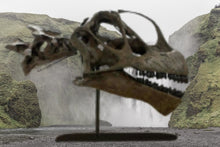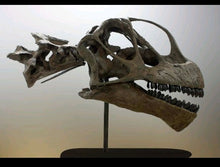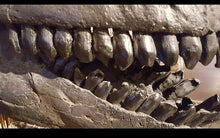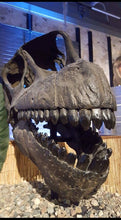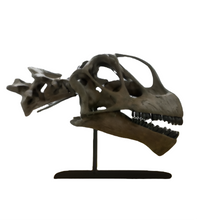
Camarasaurus skull (with neck vertebrae) cast replica
Camarasaurus skull #1 (the finest known);
Jurassic;
Skull measures approx. 26 x 24 x 14 inches; plus vertebra
$6,800 plus crating and shipping
Only 1 cast available.
This will be removed after item is sold. Skull is also available for rent
This Camarasaurus grandis skull (GMNH-PV 101) is some of Western Paleontological Laboratories' finest work. The original is now in Gunma, Japan, it is amongst the best-preserved #sauropod skulls. Described by Jack McIntosh, and the WPL team from near Bone Cabin Quarry, that Kimmeridigian-aged Late #Jurassic goldmine that births incredible #dinosaur material to this day.
Found fully disarticulated, missing only the jugals, vomers, stapes, prearticulars, and the sclerotic ring bones, it is a testament of luck meeting preparation. WPL, took the skull out in essentially one giant block, carefully prepared at times tissue-paper-thin bone.
8 cervicals (including the ultra-rare proatlas (!) (=post-occipital bone" in the early literature), 7 dorsal neural spines and, 53 caudal vertebrae were found, including the tip, which ended in a point. The complete, articulated "baby", C. lentus CM 11338, also had 53 caudals. Coincidence? I think not!
66 teeth were collected. Cam has 56 teeth. Some of the "extra" teeth were unerupted, while a few others "rolled in" as shed teeth from another individual based on their wear pattern. The WPL team sorted the teeth and were able to pair them! Knowing the largest were up front, they alternated them top and bottom. Amazing!
In the paper describing GMNH-PV 101 the authors suggest one could tell the sex of a specimen based on its base caudal vertebra neural spine thickness. They noted of YPM 1905 (two specimens found next to each other in Marsh Quarry No. 1 at Como Bluff), one had narrow (paratype) and one wide (holotype), neural spines.
#dinosaurs #dino #paleontology #geology #museum #fossils #fossil #dinosaursofinstagram #ilovedinos #prehistoric #extinct #scicomm #instamuseum #museumfromhome #naturalhistory #sauropodsunday






